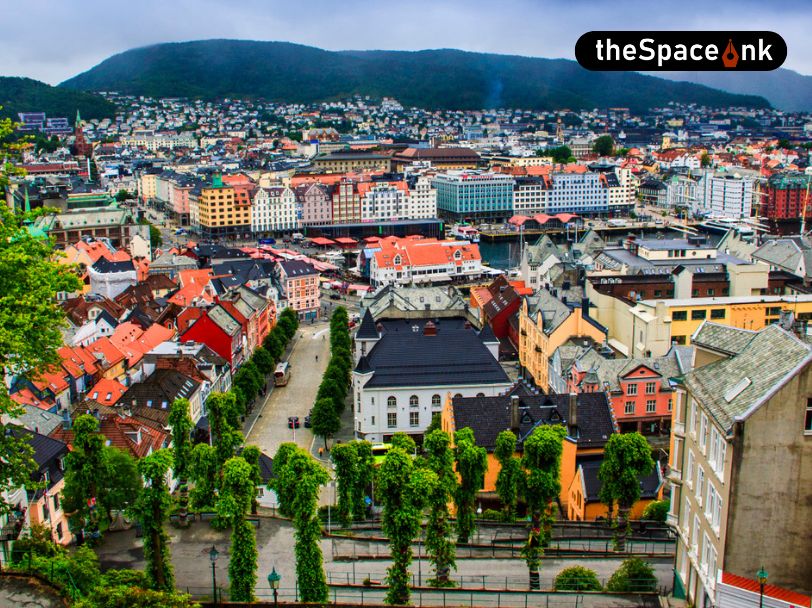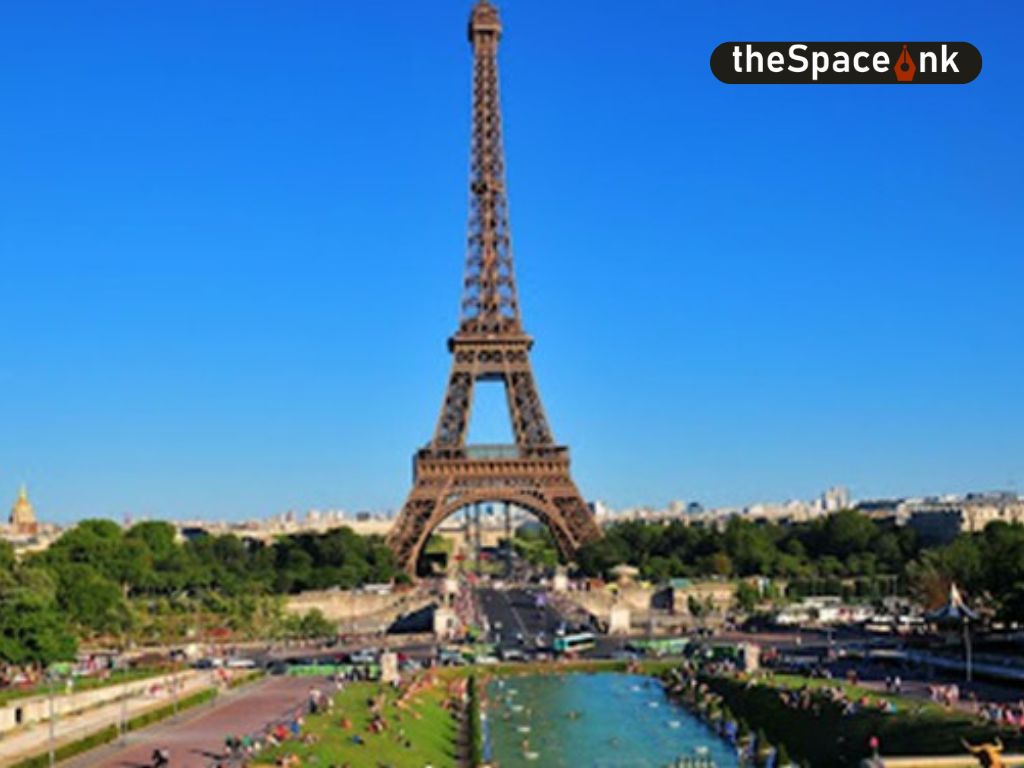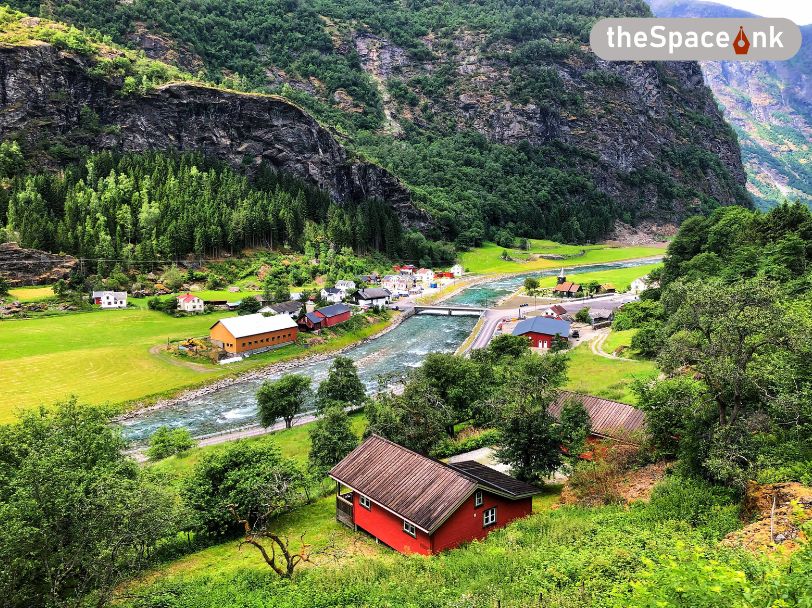To take the leap or not to take the leap – that was the question. I stood at the top of the steps. At the bottom of the steps, the ceiling had converged downwards. For my physique it would take a little leap from the bottom step and raise my right hand fully to touch that wall. A part of me warned me it is not worth the trouble. The other buzzed around my brain reminding me it is now or never. It won. That year the Chelsea Football Club was at the top of the English Premier League. I was at the stadium tunnel through which the players go out onto the field. It is a Chelsea tradition for players walking down the steps on to the last few feet of the tunnel, to reach up and touch the wall. The wall has been painted Chelsea blue and on it was the circular white logo of the club with the lion inside the circle, standing proudly on two hind legs.
Three other people had already gone down the steps. They did not bother to reach and touch the wall. I followed. As I came up to the opportune spot, I paused and took the leap. My right hand was raised as high as possible and my palm hit the wall right below the Chelsea logo. I landed firmly on the ground. I continued walking and a few minutes later I was on the grass. As I looked up to see a sea of blue chairs rise up from the ground all around me to define the stadium. The word Chelsea written in white was prominent. I closed my eyes and turned a full three sixty degrees, slowly and imagined, it is game day. I could hear the thunderous cheer of fans. It gave me goosebumps.

Now, let us start at the very beginning. We were visiting the Chelsea Football Stadium in a group of twenty. Once inside the stadium, we had to wait in a rather tiny room. The red-painted letters on a glass door near us announced: “Exit for Stadium Tours”. “Hello, my name is Jaime and I will be the tour guide for the 2:00 p.m. group today,” announced a cheerful voice. Jamie strolled into our waiting area sporting a wide smile. He was our savior, for it was a busy day packed for the tours of Chelsea Football Club Stadium. Many visitors had to wait for more than two hours to get a tour. Jaime led us out of our holding area. I was thankful I had decided to purchase my tickets online and in advance.
His wide smile still in place, our guide started checking our tickets to ensure that we were all booked for this particular tour at 2 pm. Once that was over, he opened the door and raised a hand to signal that we should follow him. As if on cue, all twenty of us stepped out into a cold but sunny London afternoon and headed across the street to the stadium.
Entering the stadium building through a side door, with our cameras and phones in hand, we followed Jaime up several steps. At the top of the steps, Jamie moved to the side and raised his right hand towards the beautiful green pitch of the Stamford Bridge stadium which had just come into view.
We followed Jamie down the steps towards the ground level. Jaimie quickly went down the steps, stopped and turned around to face the group. “Please take a seat,” he said, gesturing towards the stadium’s blue chairs.

I found a seat a few rows from ground level and turned around. A sea of blue chairs had gone all the way up to the top of the stadium. In front was one of the corner points of the playing area. Near the center of the field, I could see four men walking together slowly, almost counting steps. Each holding what seemed like a stick and looking down at the grass. They would sometimes use the stick to hammer down and flatten the turf a couple of times. “Those guys on the field are getting the turf ready for the game coming up at the end of the week,” he announced with obvious pride. Jaime added that after the tour, we would have time to visit the Chelsea Museum before it closed for the day and should not miss out on the chance of seeing some of the memorabilia on display.

I had managed to spend some time at the museum before joining the tour and knew that the exhibits included signed boots and the game ball from winning championship games. There was also the opportunity to have a photograph taken with some of the recent trophies won by the Chelsea Football Club.

“Our club was founded in 1905,” our tour guide informed us, before adding, “and once again, welcome to our stadium.” With a laugh, he added, “You should be happy to be here; we are at the top of the League. In fact, you are visiting one of the best of the English Premier League.”
Jaime was certainly right. It was the last week of December 2016 and Chelsea was ranked at the top of the League, having won more than ten games in a row. Our guide now pointed to the other end of the stadium and added, “We will end the tour behind that goalpost on the second level, where you see the three white diagonal lines of Adidas. That is a good photo-op spot too.” While Jaime paused in his commentary, I reflected on the year of its founding, 1905. My mind traveled to India six years later, to 1911. That year India’s oldest football club, Mohun Bagan, had become the first Indian club to win the Indian Football Association (IFA) shield in India with a victory over East Yorkshire Regiment. Mohun Bagan football club was founded in 1889.

Raising a hand, Jaime motioned us to follow him again. Back inside the stadium, we came up to a wooden door with a sign marked: “Away Team.” This was the visitors’ locker-room area. “Let’s go in,” our tour guide said with gusto. As we entered the room, I noticed the foot-wide bench that ran along the walls. Above the bench was a line of hooks to hang jerseys. In fact, the room was decorated with jerseys bearing the names of various players from visiting clubs who had participated in games at the stadium. Two young girls suddenly stepped out from our group, went quickly to the corner and sat down on the bench below one of the jerseys to take a selfie. The visiting footballer whose jersey they had chosen was in red and blue vertical stripes, with the number “10” inscribed on the back in yellow. Above the number were five letters – Messi.
“What happens to these jerseys on match day?” I asked Jaime.
He laughed. “We remove them several hours ahead of the match, as we not only have to hand over this room to the representatives of the visiting team, but also give up all access to the room until the game is over and the visitors have left.”
He added that sometimes the visiting team would be allowed to take over the room a day earlier.
Turning to address the group, our guide now said, “Let’s go over to a much more interesting location – the Chelsea lockers.”

We trooped out of the visitors’ locker room. Jaime opened the wooden door on the other side of the narrow hall and invited us in.
The Chelsea locker was, quite possibly, double the size of the visiting teams’ locker room and much better illuminated. The players’ area had a one-foot wide bench along the walls of the room. The bench was upholstered in deep blue, Chelsea’s colour. Above the bench rose a six-foot high wood panel, affixed with a silver handle. From it hung Chelsea jerseys, all arranged neatly. Next to each jersey was a silver metal plate, four inches long, with the name of the player inscribed on it in black letters. I looked around the room slowly. Jaime answered a question from the group that had been on my mind.
“Currently,” I heard him say, “it is the captain of the team who decides whose jersey will hang next to which player.”

It was by virtue of the team captain’s decision that the blue jersey with the round white collar, bearing the number 24, along with the name of Cahill, had been hung alongside the number 26 jersey that had the name Terry inscribed on it.
Jaime pulled a pen out of his right pocket and hit a small metal gong near the door. “This is used to notify the captain that they have ten minutes to leave the room,” he explained.
In those ten minutes, the team usually got into a final, pre-game huddle, after which it was time to walk out onto the field. Jaime led us out through the door into a narrow corridor, about seven feet wide, before we turned right and went down seven steps. At the bottom of the steps, the ceiling came down to create a wall above the last step and the feel of a narrow tunnel going forward. The entire wall above those steps was painted blue and bore the white emblem of Chelsea. At the foot of the stairs, on the right, was another door that led into the referees’ room. A small stretch of floor followed, beyond which we could see the green expanse of the field and a part of the stadium, with the word, “Chelsea,” painted in white across the blue stadium seats. Jaime had shepherded us along the wall that flanked us on the right of the corridor.
Satisfied that we were properly lined up, Jaime lifted both hands, palms facing us and bowed his head. Looking up with a very somber face, he whispered, “Imagine it is match day. The crowd of forty thousand outside is roaring. The Chelsea team is lined up just where you are. The visitors are along the opposite wall.” He went on to add that the referee would come out to inspect the team players and then the teams would head out into the field. “Follow me to the field now and enjoy the same view that the team players see.”
I followed the group down the first set of steps at the bottom and before moving forward, paused and raised my hand to touch the Chelsea sign above me.
“Do not forget this Chelsea tradition, please,” Jaime had reminded us.
I walked out to the side of the pitch, stood and made a slow three hundred sixty degree turn to feel the stadium around me. A sea of blue seats rising up to the skies. The stadium felt colossal. The words of Jaime rang again in my ears— “Imagine it is game day”. The roar of the crowd as the teams emerge from the tunnel.
From there, the group followed him to the top of the stadium and made a right turn to come up to an area behind a goalpost.
“This is my preferred photo area,” our guide proudly declared.
The seats behind the goalposts had the three diagonal white lines – the Adidas logo.
“We have several international sponsors,” Jaime explained. “One of them is Adidas. Another major one is Wipro, the Indian computer firm which handles some of our computing work for the tickets.”
The players’ area had a one-foot wide bench along the walls of the room. The bench was upholstered in deep blue, Chelsea’s colour. Above the bench rose a six-foot high wood panel, affixed with a silver handle. From it hung Chelsea jerseys, all arranged neatly. Next to each jersey was a silver metal plate, four inches long, with the name of the player inscribed on it in black letters.
He added that all these sponsor logos were to be also found along the wall of the press area we had visited earlier.
“In fact, if you wanted to drink beer at the stadium,” Jaime chuckled, “you would find only one beer – our sponsor, the Singha beer of Thailand.” Pointing to the lines of the Adidas logo on the stadium, he whispered, “That is going to go away soon. We have a new sponsor – Nike. Those seats will need new paint soon.”
“Why?” someone from the group asked.
Quick came the reply, “Much more money.”
After giving us a few minutes to absorb the area around us, Jaime announced that since our tour had come to an end, he would be taking us to Chelsea’s stadium shop, where he would bid us goodbye.

Then turning to me, he said, “To answer your earlier question, we are called ‘the Blues’ because of the color of our symbol and jersey, but we were also called the Pensioners once.”
This name, he explained, had come from the club’s close association with the Royal Hospital Chelsea, a retirement home for former soldiers of the British Army. Those staying at the home used to be called the Chelsea Pensioners, it seems.
The stadium shop was spread over two entire floors and included a variety of the usual memorabilia – jerseys, footballs, tee shirts and videos. There was even a special sale on, with certain items being offered at a discount of fifty percent. I had not planned on buying anything but after spending some time there I could not resist buying three different types of Chelsea scarves.
Stamford Bridge location: Chelsea Football Club, Stamford Bridge Stadium, Fulham Road, London, SW6 1HS
Nearest Tube station: Fulham Broadway
Online tickets are available at: Stadium Tours and Museum
Images courtesy: Biswa Pratim Bhowmick & Wikimedia Commons
Biswa Pratim Bhowmick was born in Kolkata and currently with the Fordham University as Assistant Dean/Associate Director with the Higher Education Opportunity Program at the campus in the Bronx. He is a habitual traveller with keen interest in history, culture and people. He has travelled extensively within USA. He also frequently visits Europe and Asia.








